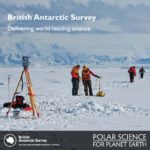Long-lasting geomagnetically induced currents and harmonic distortion observed in New Zealand during the 07-08 September 2017 Disturbed Period
1 June, 2018 by Mark Clilverd
Several periods of Geomagnetically Induced Currents (GIC) were detected in the Halfway Bush substation in Dunedin, South Island, New Zealand, as a result of intense geomagnetic storm activity during 06…
